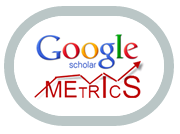POLITICAL ORIENTATIONS OF CONTEMPORARY RUSSIAN STUDENT YOUTH (BASED ON THE RESULTS OF A SOCIOLOGICAL SURVEY)
Resumo
Goal: The paper reports the results of a study aimed to determine the level of political participation of youth and the preferences of young people regarding political news sources. The authors also assess the dynamics of youth involvement in political agenda compared to 2018. Methods: The primary research method is a survey. The survey was conducted in the fall of 2022 by the Department of Public Relations and Applied Political Science at the Higher School of Journalism and Media Communications of Kazan Federal University (Russia). The study includes 404 respondents between the ages of 14 and 29. The results of the survey are compared with the results of a similar survey in 2018. Results: The survey shows a high percentage of young people's interest in political life – 75.1%. 30% of respondents assess their interest as regular. Increased interest among respondents in economic news is also observed. The most popular sources of information according to the results of the survey are video blogs and Telegram channels. Conclusion: The study indicates a natural increase in the level of youth engagement in the political agenda, given the recent developments in foreign policy and macroeconomic issues. Survey participants exhibit a need to seek answers to the political and economic agenda. The results of the survey suggest conclusions about the way effective political communication with this social group should be built.
Palavras-chave
Texto completo:
PDF (English)Referências
Arzhanykh, T.F., & Pankratova, E.V. (2016). Elektoralnoe povedenie studencheskoi molodezhi v izbiratelnom protsesse sovremennoi Rossii [Electoral behavior of student youth in the electoral process of modern Russia]. Sociologie Cloveka, 1, 48-50.
Gazeta. Ru. (2018, March 29). SMI i biudzhet: Dengi zakonchatsia vmeste s futbolom [Media and the budget: The money will end together with soccer]. Retrieved from https://www.gazeta.ru/business/2018/03/28/11699354.shtml (accessed December 10, 2022).
Germeks, G.K. (2015). Rol molodezhnykh obshchestvennykh organizatsii v razvitii grazhdanskogo obshchestva [The role of youth public organizations in the development of civil society]. Mezhdunarodnyi Studencheskii Vestnik, 1, 101-110.
Granados, N. (2018, December 18). Digital video and social media will drive entertainment industry growth in 2019. Retrieved from https://www.forbes.com/sites/nelsongranados/2018/12/18/digital-video-and-social-media-will-drive-entertainment-industry-growth-in-2019/?sh=57b94f024661 (accessed December 10, 2022).
Inc. (2022, March 3). Audience of Telegram news channels grew by 19.5 million in a week. Retrieved from https://incrussia.ru/news/growth-tg-mln/ (accessed December 10, 2022).
Kolobova, E.Iu. (2019). Razvitie rossiiskogo mediarynka i tsifrovoi razryv [Development of the Russian media market and the digital divide]. Administrative Consulting, 6, 67-78. https://doi.org/10.22394/1726-1139-2019-6-67-78
Korolev, A.A. (2014). Molodezhnoe soznanie: Mifologicheskaia konstanta i sposoby vozdeistviia na nee [Youth consciousness: A mythological constant and ways to influence it]. Nauchnye trudy Moskovskogo gumanitarnogo universiteta, 12(168), 28-39.
Laptev, V.V. (2015). Mifologiia rossiiskoi modernizatsii: Osobennosti politicheskogo diskursa [The mythology of Russian modernization: Peculiarities of political discourse]. Historical, Philosophical, Political and Law Sciences, Culturology and Study of Art. Issues of Theory and Practice, 3-3(53), 108-110.
MediaScope. (n.d.). Ratings. Retrieved from https://mediascope.net/data/ (accessed December 10, 2022)
Miuller, D.G., & Fatykhova, D.R. (2016). Problemy sovremennoi rossiiskoi ekonomiki glazami studencheskoi molodezhi: Po rezultatam sotsiologicheskogo issledovaniia [Problems of modern Russian economy through the eyes of students: The results of sociological research]. International Research Journal, 5, 126-128. http://dx.doi.org/10.18454/IRJ.2016.48.046
Morozova, G.V., Müller, D.G., & Fatykhova, D.R. (2015). The attitude towards the WWII among students (according to the results of sociological research). In Materials of the 8th International scientific conference science and society (SCIEURO), November 24-29, 2015, London, UK (pp. 161-166). London: SCIEURO Publishing.
Nogaeva, A.O. (2015). Motivatsiia elektoralnogo povedeniia molodezhi [Motivaiton behind the electoral behavior of youth]. In Collection of articles of the International scientific-practical conference, December 10, 2015, Penza, Russia (pp. 71-75). Ufa.
Open RT. (2022, December 23). Information about the population of the Republic of Tatarstan by age groups (at the beginning of the year), persons. Retrieved from https://open.tatarstan.ru/reports/categories/10172161/reports/31714 (accessed December 28, 2022).
Pialchenkov, V.A., & Shcherbakov, G.A. (2015). Regionalnaia spetsifika sotsialnykh problem: Glazami ekspertov [Regional specifics of social problems: Through the eyes of experts]. In L. N. Rudneva (Ed.), Problemy ustoichivogo razvitiia rossiiskikh regionov. Materials of the All-Russian scientific and practical conference with international participation, May 14, 2015, Tyumen, Russia (pp. 82-84). Tyumen: Tyumen State Oil and Gas University.
Safonova, S.G., & Pokutniaia, I.A. (2014). Elektoralnoe povedenie rossiiskoi molodezhi v sovremennykh usloviiakh [Electoral behavior of Russian youth in modern conditions]. In Problemy modernizatsii sovremennogo obrazovaniia. Proceedings of the International scientific and practical conference, October 24, 2014, Persianovskiy, Russia (pp. 126-128). Persianovskiy: Don State Agrarian University.
Technavio. (2019). Digital content market by device, type, and geography - Forecast and analysis 2020-2024. Retrieved from https://www.technavio.com/report/digital-content-market-industry-analys (accessed December 10, 2022).
Vakulenko, A.S. (2011). Obshchestvennoe mnenie i vybory: Regionalnaia spetsifika elektoralnogo povedeniia molodezhi [Public opinion and elections: Regional specificity of electoral behavior of youth]. In N. P. Kuruskanova (Ed.), Socio-humanitarian bulletin (pp. 14-16). Krasnodar: Krasnodar Center for Scientific and Technical Information (CSTI).
Zakso, A., Agung, I., Widiputera, F. (2019). Strengthening the Students Nationalism in Border Areas. Journal of Educational and Social Research, 9(3), 268-283
Zhirkova, S.K. (2013). Politicheskaia aktivnost i elektoralnoe povedenie molodezhi [Political activity and electoral behaviour of young people]. In I. A. Rudakova (Ed.), Proceedings of the XXI International scientific and practical conference “Aktualnye voprosy sovremennoi nauki”, October 24, 2013, Taganrog, Russia (pp. 207-209). Taganrog: Pero.
DOI: http://dx.doi.org/10.21902/Revrima.v6i39.6268
Apontamentos
- Não há apontamentos.
Revista Relações Internacionais do Mundo Atual e-ISSN: 2316-2880
Rua Chile, 1678, Rebouças, Curitiba/PR (Brasil). CEP 80.220-181



